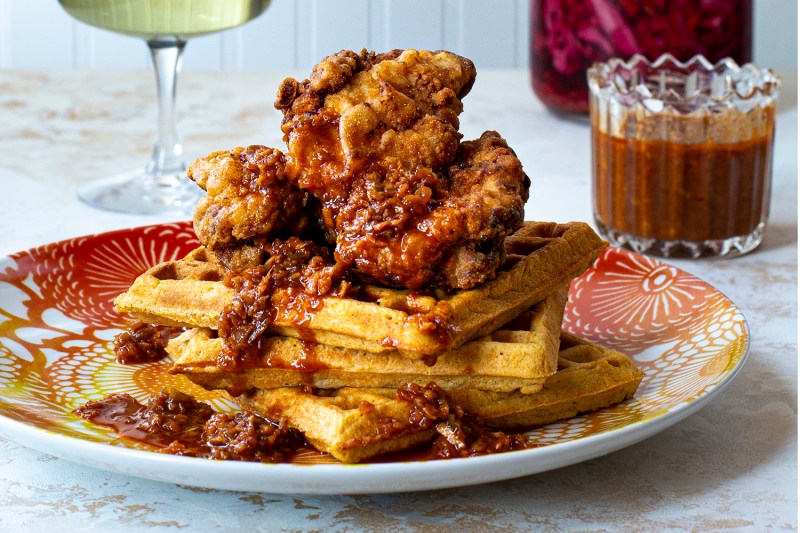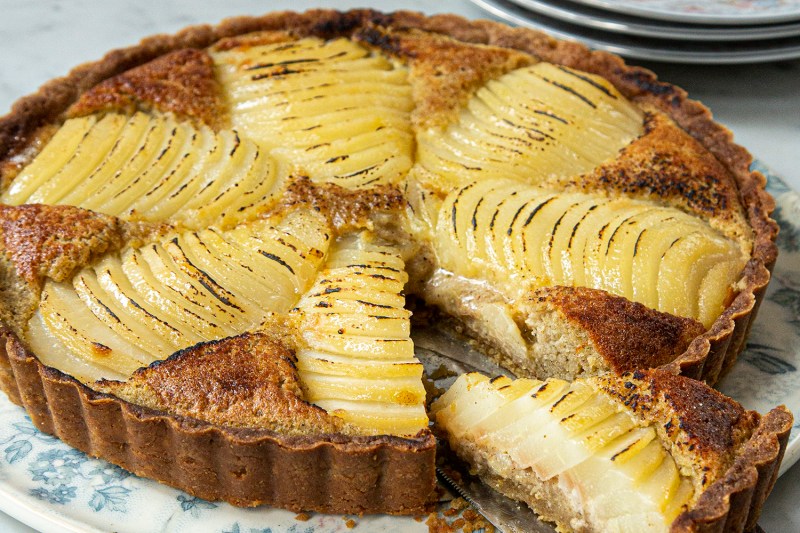On November 24, 2009, then President Barack Obama and First Lady Michelle Obama hosted a state dinner at which the Prime Minister of the Republic India, Dr. Manhoman Singh, and his wife, professor and writer Mrs. Gursharan Kaur, were the honored guests. The official program for the evening, as preserved at the website of the Barack Obama Presidential Library, lists dishes such as “Roasted Potato Dumplings with Tomato Chutney, Chick Peas, and Okra” and “Green Curry Prawns with Caramelized Salsify with Smoked Collard Greens.”
Related Guides
The program explains that “Mrs. Obama worked with Guest Chef Marcus Samuelsson and White House Executive Chef Cristeta Comerford and her team to create a menu” and of Mr. Samuelsson the program goes on to say, in part: “At the age of 39, Marcus Samuelsson has received more accolades than many chefs receive in a lifetime. A graduate of the Culinary Institute in Gothenburg, Samuelsson apprenticed in Switzerland, Austria, France and the U.S. In 1995 he was hired as Aquavit’s Executive Chef. Just three months later, Aquavit received a three-star review from The New York Times. Samuelsson was honored with the James Beard Foundation Award for ‘Rising Star Chef’ in 1999 and ‘Best Chef, New York’ in 2003.”

To be clear, that’s not even the whole of what an official White House State Dinner program said about this man, and that was 11 years ago. Samuelsson’s resume has only grown more impressive in the years since. Perhaps equally impressive is how down-to-earth and affable he was when he spoke to us late last month. And all this from a man whose life began with a deck overwhelmingly stacked against him: He left Ethiopia as an orphan following the death of his mother and was raised by adoptive parents in Sweden.
His journey from early years in poverty is a start of ascendance indeed. He went to cooking school in Switzerland and France, then came to New York in the mid 90s as a chef and part owner of a restaurant. His global background has inspired him to blend cultures in his cooking. In doing so, he’s brought together not just cuisines but human beings.
Twelve years later, he opened the wildly successful Red Rooster in Harlem, one of his many restaurants around the globe. He cooks on the Food Network, and has, to date, “done about eight cookbooks” with The Rise: Black Cooks and the Soul of American Food: A Cookbook being the latest.
During his interview with The Manual in November, place was top of mind for him, specifically his adoptive home town of New York City.
What one place has had the strongest influence on your cooking? And what person?
MS: I mean I’d say the place of New York City. It’s such a multifaceted, multicultural place with such a high intensity of talent and the huge diverse customer base. As for people, it’s Miss Leah Chase from New Orleans. She just passed away last year but she was just highly influential in my life. She opened her restaurant in the 40s in New Orleans, saw integration, the end of segregation, she survived Katrina, she was just a major figure.

What is one dish you could prepare that wish everyone on earth could try?
MS: Oh, I would say an Ethiopian meal. When you eat Ethiopian food, you eat with your hands. You sit together. You truly break bread. It starts with the injera bread, which is a sourdough pancake that’s fermented, then you have these scoops of great stews, like lentil stews or chicken stews, and it’s all tied together with this incredible spice blend called berbere, but more importantly it forces you to engage, to eat together with extended family, it’s one of those things that’s truly social, truly together.
How do you describe the type of food you primarily cook?
MS: Well for me food is about bringing people together, so that’s what informs what I’ve done at Red Rooster, to try to offer foods that offer something beyond just the meal, but that can help you learn about a cuisine and through that a culture. My food is rooted in southern American tradition, what is often considered today as Soul Food, but really it runs the gamut of the Black Diaspora. It stems from Africa, not just the south here.
When you blend foods together from differing cultural backgrounds, how do you maintain authenticity even as you create new tastes?
MS: Blends will happen because the world is extremely blended, and it always has been, whether you go back to the markets of Marrakesh or in Africa or anywhere, there’s always been blending, but I think you’ve got to respect the origin of a dish, and how do you highlight that and broadcast that origin, that way a dish took shape in a meaningful way that now it’s spread and now that you’re broadcasting it, because it’s not about you, the chef, it’s about the dishes, the cuisines.
What are the most common misconceptions about Black cooking in America?
MS: The reason why I wrote The Rise is that I wanted to highlight Black excellence, to highlight the incredible Black chefs who have contributed so much to American food that we were really not broadcasting out there enough. This was my attempt to give credit where credit is due, and also to help us understand black cooking, which is highly layered, highly complex. It’s connected to Africa, it’s connected to the Great Migration, and it also has to do with immigration. It’s not just one story.
How long did it take to bring The Rise: Black Cooks and the Soul of American Food to publication after you first conceived the idea?
MS: This was a four or five year project, I look at it almost like a PhD. I spent so long vetting this in my head: Is this an article? Is this a book? After all this research and working with all these people, is there enough for a book? And, you know, there was.

Who is the intended audience for the book?
MS: It’s America’s food. I want as many people as possible to read it, because we need to engage in race and culture in a way that is not alienating us. This is just a delicious way for us to engage in that together.
What advice do you have for people who want to improve their own cooking at home?
MS: Look, just cook a lot. You need to learn to manage heat, which can be hard at home, but just cook a lot and you’ll improve. Learn the basics and then you can go from there. Like my nephew has been living with us during the pandemic, and I said to him: “Look, just learn five dishes for now. I want you to leave this house knowing how to make five dishes at least that are yours, that you have down.” I said one pasta dish, one rice, one potato, I want him to know how to make a soup. You just need to have those tools and then you can go as far as you want.
How has the ongoing pandemic affected your restaurants and how do you think it’s affecting food in America overall?
MS: I’m glad we all started cooking again. It’s been great to see that not only as a chef but as an American, it’s wonderful to see so many more people engage in cooking. But at the same time this has shown that we all miss restaurants. Restaurants are the heart and soul of neighborhoods. Once restaurants disappear, there go next the barber shops, the mom and pop places. Restaurants bring us together, and we’ve seen that here this year in Harlem at the [Red Rooster] restaurant. People kept coming, nurses, doctors, homeless people, and people who just wanted to get out and get something good to eat. Getting out of the pandemic is going to take all of us working together. Forget Democrat, Republican, we just need to say we’re Americans, we can do better than this together.



